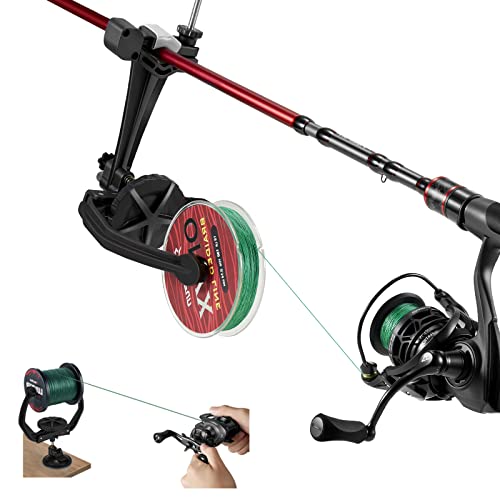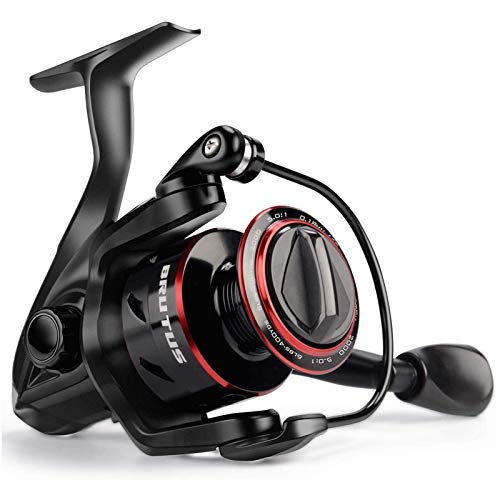To start a fishing lure business, conduct market research to identify target customers and competitors, develop a unique product line, create a business plan, and establish a strong online and offline presence through effective marketing strategies. In addition, build relationships with suppliers, ensure product quality, and provide exceptional customer service to foster customer loyalty and boost sales and profitability.

Credit: www.eastidahonews.com
Understanding The Fishing Lure Market
The Growing Popularity Of Fishing As A Hobby
Fishing is not only a peaceful pastime but also a popular hobby enjoyed by millions across the globe. The charm of casting a line and waiting for that perfect catch has captivated enthusiasts of all ages. The fishing industry has seen tremendous growth in recent years, with more people taking up fishing as a recreational activity.
Understanding the growing popularity of this hobby is crucial when starting a fishing lure business.
- Fishing is considered a stress-relieving and therapeutic activity that allows individuals to disconnect from the daily grind and connect with nature.
- The rise of social media platforms has contributed to the increased visibility and influence of fishing enthusiasts, showcasing their catch and experiences, further fueling interest in the hobby.
- With the growing focus on sustainability and eco-friendly practices, fishing offers a unique opportunity to connect with nature and make a positive impact on the environment.
Market Research: Identifying Target Customers
Before launching any business, thoroughly understanding the target market is essential in order to position your products effectively. For a fishing lure business, it’s crucial to identify the key customer segments to tailor your marketing efforts accordingly.
- Conduct market research to identify the different types of fishing enthusiasts, such as freshwater, saltwater, fly fishing, or ice fishing, as each segment may have specific preferences and needs.
- Define your niche by understanding the geographical location and demographics of your target customers. Factors such as age, income level, and fishing experience can play a significant role in determining their lure preferences.
- Identify the various motivations behind fishing, such as competition, relaxation, or the thrill of the catch. Each motivation may require a different approach when marketing your lures.
Analyzing Competitors: What Sets Your Lures Apart
The fishing lure market is highly competitive, with numerous established players. To succeed in this industry, you need to have a unique selling proposition (usp) that sets your lures apart from the competition.
- Research and analyze the different types of fishing lures available in the market, understanding their features, materials, and designs.
- Identify any gaps or unaddressed needs in the market and develop lures that cater to those specific requirements.
- Highlight the unique qualities of your lures, such as innovative designs, durability, realistic appearances, or superior performance, to differentiate yourself from competitors.
- Test your lures extensively to ensure they meet the expectations of your target customers. Incorporate feedback and make improvements accordingly to stay ahead of the competition.
Remember, starting a fishing lure business requires a deep understanding of the fishing lure market, including the growing popularity of fishing as a hobby, identifying target customers through thorough market research, and analyzing competitors to differentiate your lures. By addressing these aspects effectively, you can position your fishing lure business for success in this vibrant and competitive industry.
Building Your Fishing Lure Brand
So, you’ve decided to start a fishing lure business and now it’s time to build your brand. Creating a strong brand identity will help you stand out from the competition and attract loyal customers. Here are some key points to consider:
Creating An Eye-Catching Brand Identity
- Define your brand values: Start by identifying what your brand stands for. What sets your fishing lure business apart from others? Determine your core values and use them as a foundation for your brand identity.
- Craft a unique brand story: Develop a compelling narrative that shares your passion for fishing and the inspiration behind your lures. This story will help connect with customers on a deeper level.
- Choose a memorable name and logo: Select a name that captures the essence of your fishing lure business. Design a visually appealing logo that reflects your brand’s personality and resonates with your target audience.
- Develop a consistent visual style: Establish a consistent color palette, typography, and visual elements that will be used across all your marketing materials. This will create a cohesive brand identity and make your brand easily recognizable.
- Create engaging brand messaging: Craft a strong tagline and product descriptions that communicate the unique features and benefits of your fishing lures. Use language that resonates with your target market and evokes emotions.
Designing And Manufacturing Quality Fishing Lures
- Focus on quality materials and craftsmanship: Use high-quality materials and ensure meticulous attention to detail in the manufacturing process. This will result in durable and effective fishing lures that customers trust and rely on.
- Innovate and differentiate: Stay on top of the latest trends and technologies in fishing lure design. Experiment with different shapes, colors, and features to create lures that stand out in the market. Offer unique designs that can’t be found elsewhere.
- Test and refine your lures: Regularly test your fishing lures in real-life fishing scenarios to ensure they perform as expected. Gather feedback from anglers and make necessary improvements to enhance their effectiveness.
- Offer a range of options: Cater to different fishing styles and target species by offering a diverse range of fishing lures. This will attract a wider customer base and increase your chances of success.
Establishing Your Online And Offline Presence
- Build a professional website: Create a user-friendly website that showcases your fishing lures and provides all necessary information for potential customers. Optimize your website for search engines to improve your online visibility.
- Leverage social media: Establish a presence on popular social media platforms where anglers gather. Share engaging content, post fishing tips, and interact with your followers to build relationships and grow your online community.
- Attend fishing trade shows and events: Participate in fishing trade shows and exhibitions to showcase your fishing lures to a targeted audience. Network with industry professionals and potential customers to expand your reach.
- Seek endorsements and collaborations: Partner with professional anglers and fishing influencers who can endorse your fishing lures. Collaborate on content creation and promotions to reach a wider audience and gain credibility.
By focusing on creating an eye-catching brand identity, designing and manufacturing quality fishing lures, and establishing a strong online and offline presence, you’ll be well on your way to building a successful fishing lure business. Remember to stay true to your brand values and consistently deliver exceptional products and experiences to your customers.
Strategies For A Successful Fishing Lure Business
Starting a fishing lure business can be an exciting venture for fishing enthusiasts and entrepreneurs alike. However, to ensure success in this competitive market, it is vital to develop effective strategies. In this section, we will explore three key areas for a successful fishing lure business: developing a pricing strategy for maximum profitability, implementing effective marketing and advertising techniques, and building strong customer relationships and loyalty.
Developing A Pricing Strategy For Maximum Profitability
- Determine the cost of production: Calculate the costs involved in manufacturing your fishing lures, including materials, labor, and overhead expenses.
- Research the market: Analyze the pricing of similar products in the market to understand the competitive landscape.
- Position your offerings: Identify the unique selling points of your fishing lures and consider pricing them accordingly.
- Price your products competitively: Strike a balance between offering value to customers and ensuring profitability for your business.
- Regularly evaluate and adjust pricing: Keep a close eye on market trends and customer feedback to make necessary pricing adjustments.
Effective Marketing And Advertising Techniques
- Identify your target audience: Understand the demographics and preferences of your potential customers to tailor your marketing efforts.
- Develop a strong brand identity: Create a unique brand that represents the qualities of your fishing lures and resonates with your target market.
- Utilize online platforms: Make use of social media, online marketplaces, and your own website to showcase your products and engage with customers.
- Leverage content marketing: Create informative and engaging content such as blog posts, videos, and tutorials to establish yourself as a knowledgeable authority in the fishing industry.
- Collaborate with influencers: Partner with fishing enthusiasts, bloggers, or social media influencers to promote your products and expand your reach.
Building Strong Customer Relationships And Loyalty
- Provide exceptional customer service: Prioritize customer satisfaction by promptly addressing inquiries, offering helpful advice, and resolving any issues.
- Offer incentives and rewards: Implement a customer loyalty program that rewards repeat purchases or referrals to encourage customer retention.
- Seek feedback and improve: Regularly gather customer feedback to understand their needs and preferences. Use this information to continuously improve your products and services.
- Engage with your customers: Interact with your customers through social media, email newsletters, or a blog to build a community around your brand.
- Develop personal connections: Attend fishing events, participate in forums, and connect with fishing communities to forge personal relationships with your customers.
By implementing these strategies, you can set your fishing lure business on the path to success. Remember to constantly evaluate and adjust your approach as the fishing industry evolves, and always strive to exceed customer expectations.
Conclusion
Starting a fishing lure business can be a rewarding venture for those passionate about fishing and entrepreneurship. By following the steps outlined in this guide, you can lay the foundation for a successful business. Begin by conducting thorough market research to identify your target audience and competition.
Focus on creating high-quality and unique fishing lures that cater to the specific needs of your customers. Establish an online presence through a professionally designed website and effective seo strategies to drive organic traffic. Build relationships with wholesalers and retailers to expand your distribution network and reach a wider customer base.
Stay updated with industry trends, continuously improve your products, and provide exceptional customer service to foster loyalty and increase brand awareness. With dedication, determination, and a love for fishing, your fishing lure business can thrive in the competitive market. So, grab your rods and reels, and get ready to reel in success with your own fishing lure business!




